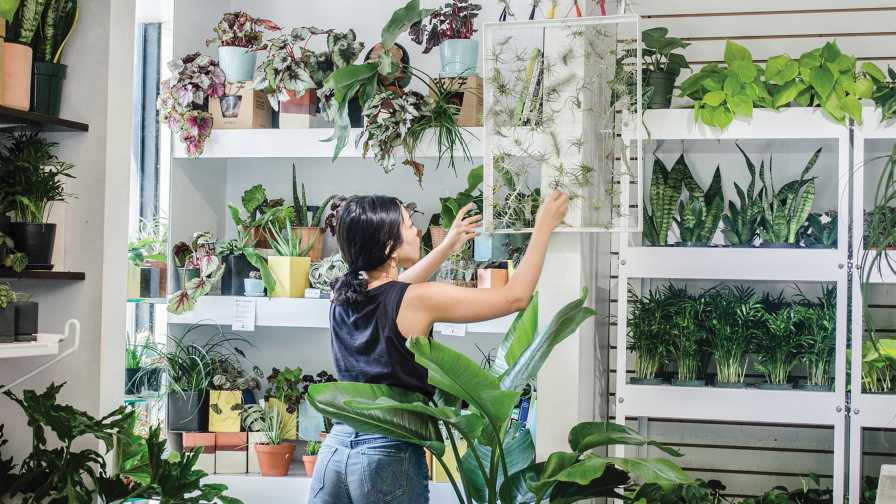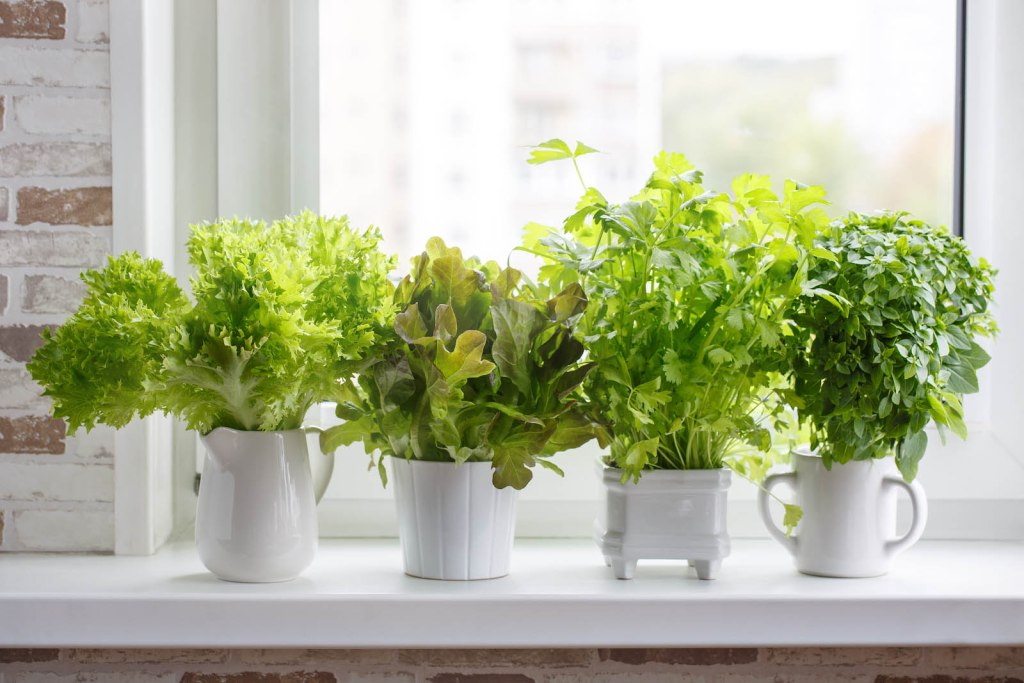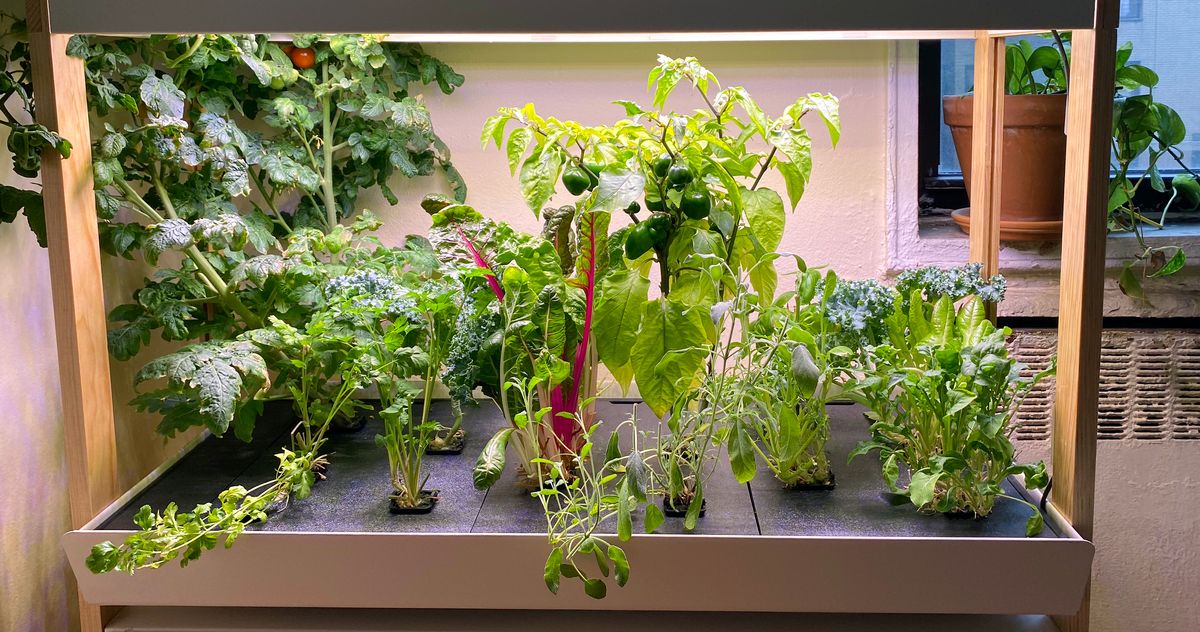
Indoor gardening has evolved beyond the traditional potted plant on a windowsill. With advancements in technology and techniques, there are now countless ways to cultivate a thriving garden within the confines of your home.
In this article, we will explore ten advanced indoor gardening techniques that are sure to elevate your gardening experience. From hydroponics to bonsai cultivation, each method offers a unique approach to nurturing plants, allowing you to unleash your creativity and achieve impressive results.
Discover these innovative techniques and take your indoor gardening to new heights.
Hydroponics
Hydroponics is a cutting-edge cultivation method that involves growing plants without soil, using carefully controlled nutrient solutions instead. This innovative technique is gaining popularity among indoor herb gardeners who seek efficient and sustainable ways to grow plants.
By removing the need for traditional soil-based gardening, hydroponics offers several advantages. Firstly, it allows for precise control over plant nutrition. The nutrient solutions used in hydroponics contain all the essential elements required for plant growth, ensuring that plants receive optimal nutrition at all times. This eliminates the guesswork of traditional gardening methods, where plants may not receive adequate nutrients from the soil.
Secondly, hydroponics enables year-round herb gardening, regardless of the climate or season. By creating a controlled indoor environment, gardeners can provide plants with the ideal temperature, humidity, and lighting conditions they need to thrive. This means that fresh herbs can be grown and enjoyed even during the winter months.
Aeroponics
Aeroponics is an innovative cultivation technique that involves growing plants in a mist-filled environment without the use of soil or water. This method allows plants to receive the necessary nutrients through aeroponic misting. Aeroponics takes advantage of the plants' ability to absorb nutrients directly through their leaves and stems.

The plants are suspended in the air, and a nutrient mist is periodically sprayed onto their roots. This mist contains a carefully balanced mixture of essential nutrients, providing the plants with everything they need for healthy growth. By eliminating the need for soil, aeroponics allows for greater freedom in terms of plant placement and mobility.
The nutrient misting process ensures that the plants receive optimal nutrition, leading to faster growth rates and higher yields. Overall, aeroponics is a cutting-edge technique that offers an exciting alternative for indoor gardeners seeking efficient and sustainable cultivation methods.
Aquaponics
Aquaponics is an advanced indoor gardening technique that combines aquaculture with hydroponics to create a sustainable and efficient system.
One of the key points of aquaponics is efficient nutrient recycling, where fish waste provides nutrients for plants, and the plants filter the water for the fish.
This closed-loop system not only maximizes resource utilization but also allows for sustainable food production in a controlled environment.
Efficient Nutrient Recycling
Innovative indoor gardeners can achieve efficient nutrient recycling by implementing a system that combines aquatic organisms and plant cultivation. This innovative technique, known as aquaponics, allows for the management of nutrients in a highly efficient manner.
In aquaponics, the waste produced by aquatic organisms, such as fish, is converted into nutrients for plants. These nutrients are then absorbed by the plants, effectively recycling them and creating a symbiotic relationship between the fish and the plants.

This system eliminates the need for synthetic fertilizers and reduces water consumption, making it an environmentally friendly and sustainable method of indoor gardening. By utilizing this innovative growing system, indoor gardeners can maximize their nutrient usage and achieve optimal plant growth while minimizing waste and resource consumption.
Sustainable Food Production
To achieve sustainable food production in advanced indoor gardening, the integration of aquatic organisms and plant cultivation allows for efficient nutrient recycling. One popular method that embodies this approach is aquaponics.
Aquaponics is a system that combines hydroponics, which is the cultivation of plants without soil, with aquaculture, which is the rearing of aquatic animals. In this system, the waste produced by the aquatic animals, such as fish, is used as a nutrient-rich fertilizer for the plants. The plants, in turn, filter the water, creating a symbiotic relationship where both the plants and the aquatic animals benefit.
This method of sustainable food production is particularly beneficial for urban farming and rooftop gardening, where space is often limited. Aquaponics allows for the cultivation of a wide range of crops, including leafy greens, herbs, and even some fruiting plants.
Vertical Gardening
Vertical gardening is a space-saving technique that allows for creative and efficient plant arrangements. By utilizing vertical wall space, indoor gardeners can maximize their greenery without taking up valuable floor space.
This technique is ideal for those with limited room or for those who simply want to add a unique and visually appealing element to their indoor garden.
Space-Saving Plant Arrangements
Utilize vertical space for efficient and compact plant arrangements in indoor gardens. By incorporating space-saving containers and hanging planters, you can maximize the available area and create a stunning display of greenery. Here are four ideas to help you make the most of your vertical gardening:

- Wall-mounted planters: Hang planters directly on the wall to save floor space and create a living wall of plants. Choose containers that have built-in watering systems to ensure your plants receive proper hydration.
- Hanging baskets: Suspend baskets from the ceiling or hooks to add a touch of elegance to your indoor garden. Opt for cascading plants like ivy or ferns to create a lush and dynamic look.
- Tiered shelving: Invest in tiered shelving units that allow you to stack multiple plants vertically. This not only saves space but also adds visual interest to your indoor garden.
- Vertical hydroponics: Take advantage of hydroponic systems designed specifically for vertical gardening. These systems use nutrient-rich water to grow plants without soil, making them perfect for tight spaces.
With these space-saving techniques, you can transform your indoor garden into a thriving oasis without compromising on freedom of movement.
Utilizing Vertical Wall Space
One effective technique for maximizing indoor gardening space is by harnessing the potential of the vertical wall through strategic placement of plants. Vertical garden design offers a practical solution for those with limited floor space or a desire to create a visually stunning display. By utilizing vertical wall space, indoor herb gardening becomes much more accessible and convenient.
Vertical gardens can be created using various methods such as wall-mounted planters, hanging baskets, or even modular vertical garden systems. These designs not only save space but also create a unique and eye-catching focal point in any room.
With the right selection of herbs, you can have a vertical wall filled with fragrant and flavorful plants, enhancing both the aesthetics and functionality of your indoor garden.
Maximizing Indoor Greenery
To further enhance the indoor gardening experience, maximizing the amount of greenery in your space through vertical gardening techniques is essential. Vertical gardening allows you to make the most of limited space and adds a stunning visual element to your indoor garden. Here are four ways to maximize indoor greenery:
- Utilize wall space: Hang vertical planters or install shelves to create a living wall where plants can thrive.
- Choose trailing plants: Opt for plants with long, trailing vines that can grow downwards, cascading over shelves or hanging planters.
- Use container gardening: Utilize containers and pots of various sizes to stack plants vertically, creating a lush display.
- Position plants strategically: Place taller plants at the back and shorter ones in front to maximize natural light exposure for all plants.
Bonsai Cultivation
Bonsai cultivation requires careful attention to detail and a deep understanding of horticultural techniques. To successfully grow and maintain bonsai trees, proper bonsai care is essential.
This involves regular watering to keep the soil moist, but not overly saturated, as well as providing adequate sunlight and humidity.

Additionally, bonsai styling is an important aspect of bonsai cultivation. It involves pruning and shaping the tree to create the desired aesthetic appeal. Different techniques such as wiring and grafting may also be used to manipulate the tree's shape and structure.
Bonsai styling requires patience and skill, as it takes time for the tree to respond and develop into the desired form.
With dedication and a passion for this art form, bonsai cultivation can be a rewarding and fulfilling experience.
Terrarium Creation
Moving on to another fascinating aspect of advanced indoor gardening, let us now delve into the art of terrarium creation. Terrariums are miniature ecosystems enclosed in glass containers, providing a unique and visually appealing way to showcase plants in your home.
Here are four key elements to consider when designing your terrarium:
- Container selection: Choose a glass container with a lid or a jar with a wide opening for easy access and maintenance.
- Plant selection: Opt for miniature plants that thrive in humid environments, such as ferns, mosses, and air plants. Consider the different colors, textures, and growth patterns to create an aesthetically pleasing arrangement.
- Soil and drainage: Use a well-draining potting mix specifically designed for terrariums to prevent waterlogging and root rot. Incorporate pebbles or activated charcoal at the bottom for better drainage.
- Maintenance: Terrariums require minimal care. Keep them in indirect sunlight and mist the plants occasionally to maintain humidity. Monitor the moisture levels and water sparingly.
With these tips, you can create a stunning terrarium that brings the beauty of nature into your indoor space.
Propagation Techniques
Propagation techniques are essential for indoor gardeners looking to expand their plant collection. One popular method is water-based propagation, where cuttings are placed in water until roots develop.

Air layering is another technique that involves creating a small wound on a plant's stem and encouraging it to produce roots before detaching it.
Lastly, stem cutting propagation involves taking a cutting from a healthy plant and encouraging it to develop roots in a growing medium.
These techniques offer indoor gardeners the opportunity to create new plants and expand their indoor garden.
Water-Based Propagation Method
One effective method for propagating plants indoors is through the use of a water-based propagation technique. This method involves placing plant cuttings in water until they develop roots, allowing them to grow into new plants.
Here are four key aspects of the water-based propagation method:
- Selecting suitable cuttings: Choose healthy stems or leaves from the parent plant that are free from disease or damage.
- Preparing the water: Use filtered or distilled water to prevent contaminants from affecting the propagation process.
- Adding DIY rooting hormone: To encourage root growth, you can make a natural rooting hormone solution using ingredients like aloe vera or willow bark extract.
- Monitoring and transplanting: Keep an eye on the cuttings, ensuring they have enough light and changing the water regularly. Once roots develop, transfer the cuttings to a growing medium or potting soil.
Air Layering Technique
Continuing from the water-based propagation method, another advanced technique for indoor gardening is the air layering technique.
Air layering is a method of propagating plants by creating a new root system on a stem while it is still attached to the parent plant.

This technique offers several benefits for indoor gardeners. Firstly, it allows the propagation of plants that are difficult to root from cuttings. Secondly, it results in a larger and more mature plant compared to traditional propagation methods.
The air layering process involves making a small incision on the stem, applying rooting hormone, and wrapping it with moist sphagnum moss or plastic wrap to promote root growth.
Once the roots have developed, the new plant can be separated from the parent plant and potted independently.
Air layering is a valuable technique for expanding your indoor garden and achieving successful propagation.
Stem Cutting Propagation
To further expand your indoor garden, an effective technique to consider is stem cutting propagation, which involves the use of cuttings from a parent plant to create new plants. This propagation technique is popular among indoor gardeners due to its simplicity and success rate.
Here are four stem cutting techniques that can help you achieve new plant growth:
- Softwood Cuttings: This method involves taking cuttings from young, flexible stems. These cuttings root easily and quickly, making it ideal for plants like herbs and houseplants.
- Hardwood Cuttings: This technique is used for woody plants and involves taking cuttings from mature, dormant stems during the winter months. These cuttings take longer to root but can result in strong and vigorous plants.
- Semi-Hardwood Cuttings: This method is suitable for plants that have partially hardened stems. The cuttings are taken during late summer or early autumn and require a bit more care and attention compared to softwood cuttings.
- Leaf-Bud Cuttings: This technique involves taking cuttings that include a leaf and a bud. It is commonly used for plants like roses and fruit trees. The cuttings are taken during the dormant season and require patience as they take longer to root.
Using these stem cutting techniques, you can easily propagate new plants and expand your indoor garden. With proper care and attention, you'll soon have a flourishing collection of plants that will bring beauty and freshness to your home.

Pruning Methods
Pruning is an essential technique in indoor gardening. It involves selectively cutting back or removing certain parts of plants to promote better growth and overall health.
There are various pruning methods that can be employed to achieve different results. One commonly used method is called 'pinching.' This involves using your fingers to remove the tips of the plant's stems. Pinching encourages branching and results in a fuller, bushier plant.
Another method is known as 'thinning.' Thinning involves removing selective branches or shoots to improve air circulation and reduce overcrowding. This helps prevent the spread of diseases and encourages healthier growth.
Pruning can also be done to encourage efficient nutrient recycling. By removing dead or damaged foliage, the plant can redirect its energy towards new growth and nutrient absorption.
Composting
Moving on to the next technique in advanced indoor gardening, let's explore the process of composting. Composting is the natural process of decomposing organic materials, such as kitchen scraps, yard waste, and plant trimmings, into nutrient-rich soil. It is a sustainable and eco-friendly way to recycle organic waste and create a valuable resource for your indoor garden.
Here are four benefits of composting:
- Nutrient-rich soil: Compost adds essential nutrients to the soil, promoting healthy plant growth and improving overall soil quality.
- Reduced waste: Composting diverts organic waste from landfills, reducing greenhouse gas emissions and helping to combat climate change.
- Increased moisture retention: Compost improves the soil's ability to retain moisture, reducing the need for frequent watering.
- Enhanced plant health: The nutrients in compost help plants resist diseases and pests, resulting in healthier, more vibrant indoor plants.
To start the composting process, collect organic waste such as fruit and vegetable scraps, coffee grounds, and leaves. Layer these materials in a compost bin or pile, ensuring a balance between carbon-rich (brown) and nitrogen-rich (green) materials. Turn the pile regularly to encourage decomposition, and in a few months, you'll have nutrient-rich compost ready for your indoor garden.

Organic Fertilizer Application
What are the benefits of using organic fertilizer in advanced indoor gardening techniques?
Organic fertilizer is a key component of successful indoor gardening. It provides a range of benefits that contribute to the health and productivity of your plants.
First and foremost, organic fertilizer is derived from natural sources, such as compost, manure, or bone meal. This means it is free from synthetic chemicals and harmful additives, making it a safe and environmentally friendly choice.
Additionally, organic fertilizer releases nutrients slowly, ensuring a steady supply of essential elements for plant growth. This gradual release also reduces the risk of nutrient burn or over-fertilization.
Furthermore, organic fertilizers improve soil structure, promoting better water retention and aeration.
Overall, incorporating organic fertilizer in your indoor gardening routine is a smart choice for long-term plant health and sustainability.
For more indoor gardening tips and organic gardening tips, continue reading our article.

Frequently Asked Questions
What Are the Benefits of Hydroponics Compared to Traditional Soil-Based Gardening?
Hydroponics offers several benefits compared to traditional soil-based gardening. It allows for precise control over nutrient levels, reduces water usage, eliminates the need for pesticides, and enables year-round cultivation in any location.
How Can I Prevent Pests and Diseases in My Aeroponic Garden?
Preventive measures and organic solutions are crucial in maintaining a pest and disease-free aeroponic garden. Regular monitoring, proper hygiene, implementing companion planting, and using natural pest control methods can help ensure a healthy and thriving indoor garden.
Can Aquaponics Be Used to Grow Edible Fish Alongside Plants?
Yes, aquaponics can be used to grow edible fish alongside plants. This innovative system integrates fish and plant growth, utilizing the waste produced by the fish to provide nutrients for the plants, creating a sustainable and efficient method of indoor gardening.
What Are the Best Plants for Vertical Gardening?
When considering the best plants for small spaces and how to create a vertical garden at home, it is important to choose plants that are compact and have shallow root systems. These plants include herbs, succulents, and small vegetables.
Are There Any Special Considerations for Bonsai Cultivation in Indoor Environments?
Bonsai cultivation in indoor environments requires special considerations. Indoor bonsai care involves maintaining proper lighting, temperature, and humidity levels. Bonsai pruning techniques are essential for shaping and maintaining the miniature trees in a confined space.
 Business & FinanceHealth & MedicineTechnologyLifestyle & CultureScience & EnvironmentWorld NewsPrivacy PolicyTerms And Conditions
Business & FinanceHealth & MedicineTechnologyLifestyle & CultureScience & EnvironmentWorld NewsPrivacy PolicyTerms And Conditions
